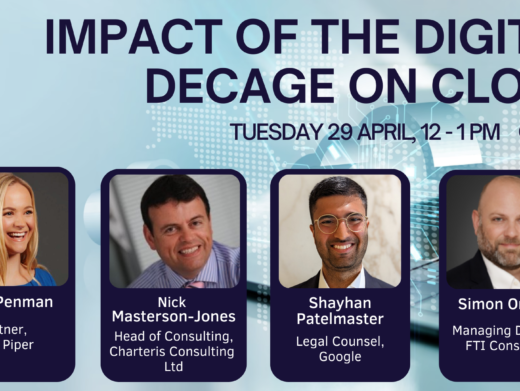Every year since 2012 I have predicted an increase in the number of new generic Top Level Domains (gTLDs), but this will not really be the case in 2017 as the first round has almost finished. Over 1,200 new gTLDs have now been launched and so it is time for ICANN and all those involved to take stock of the new gTLD Program and its successes and failures in order to plan for the next round of applications, anticipated to be in 2018 at the earliest.
The rights protection mechanisms put in place to safeguard against abuse will come in for particular scrutiny. This year saw the beginning of Registry consolidation, and I predict that in 2017 this will continue as the weaker players with ill-chosen extensions either fail or sell out and the stronger ones increase the number of popular Registries in their ownership. This year the 10 largest TLDs were .COM, .TK (Tokelau), .CN (China), .DE (Germany), .NET, .ORG, .UK (United Kingdom), .XYZ, .RU (Russian Federation) and .NL (Netherlands), and it is anticipated that in 2017 more new gTLDs will join .XYZ in this list.
2017 will also be the year that we will see companies start to use their .BRAND TLDs in much more visible and innovative ways, meaning that participation in the next round will become essential for those that have yet to make the leap.
In terms of internet governance, 2016 saw the transition of the IANA function away from the US Government to ICANN and the global internet community, although this went largely unnoticed by the mainstream media, despite doom-laden predictions from various US politicians that America was ‘giving away the internet’. I predict that, whilst ICANN’s actions will continue to come under scrutiny from national governments, the transition will on the whole be successful and 2017 will see an increase in stability as the predicted apocalypse fails to happen.
Moving on to technology in general, I have a confession to make: 2016 was the year I finally bought my own smartphone. I used to think that when I wasn’t working I should do something other than fiddling with a device (like attempting to speak to my children), so if it couldn’t be done on my trusty work phone with keyboard (you all know the one I mean), then too bad. However, 2016 was the tipping point for me when the online and the offline worlds merged, at least in my head, and I realised that I could no longer actually function properly in my daily life and complete the most basic of tasks without being almost constantly connected.
I predict that in the Western world the percentage of the population who are ‘always on’ will reach close to 100% within a generation, and this will fundamentally change society as we know it. It is clear that rapid advances in speed and storage mean that communication is becoming increasingly visual as opposed to written, and 2017 will see a huge rise in video messaging services. We will see more ‘vertical’ video as smartphones become the norm, 360 degree video will become increasingly common and the legal issues raised by live streaming will continue to challenge us. The explosion of user-generated content will force traditional media either to adapt or die.
Personal email use has almost been eliminated by those under the age of 40, and I predict that work email will soon become as outdated as the fax given the burgeoning use of social media-like interfaces by companies to facilitate professional communication.
{b}{i}Jane Seager is of Counsel at Hogan Lovells (Paris) LLP




